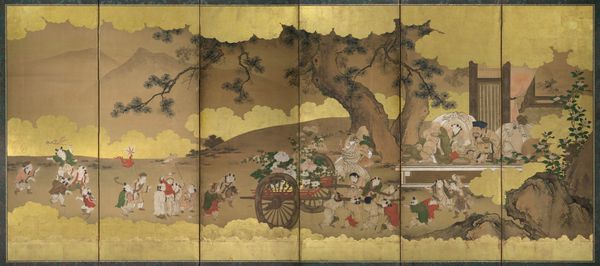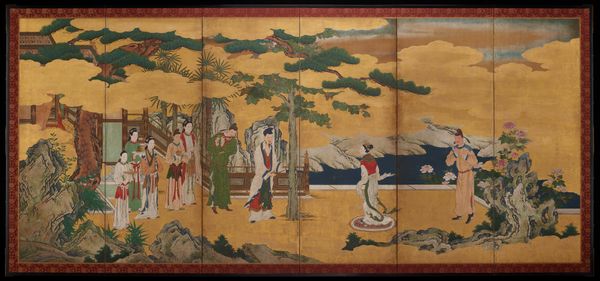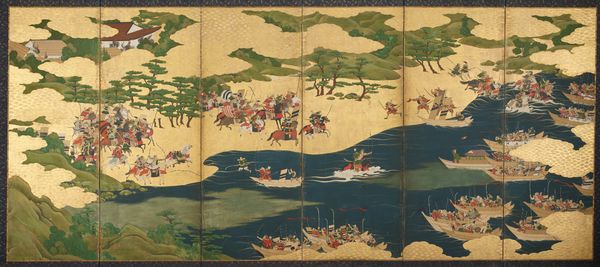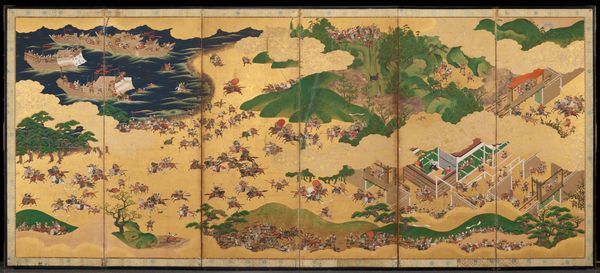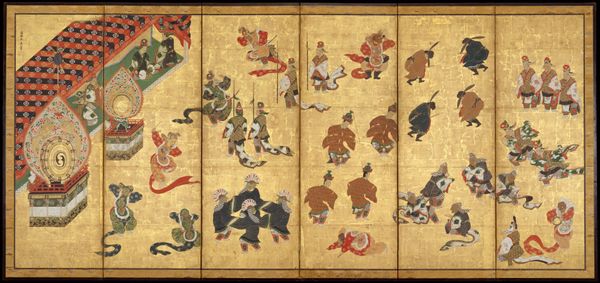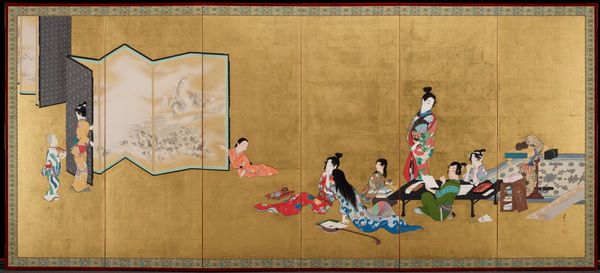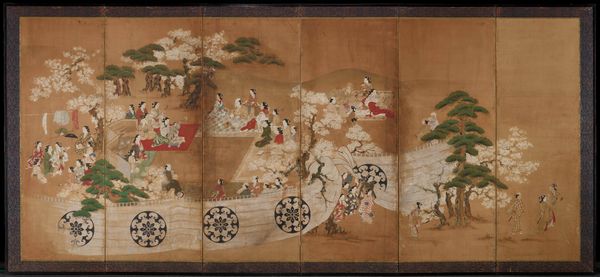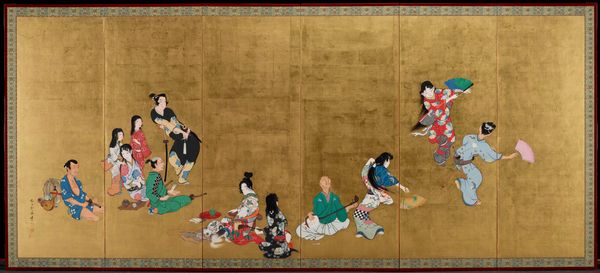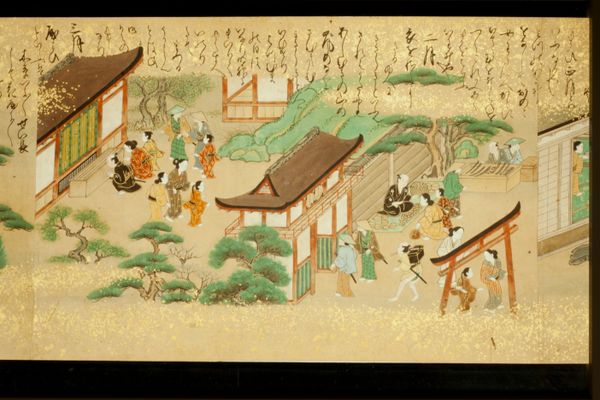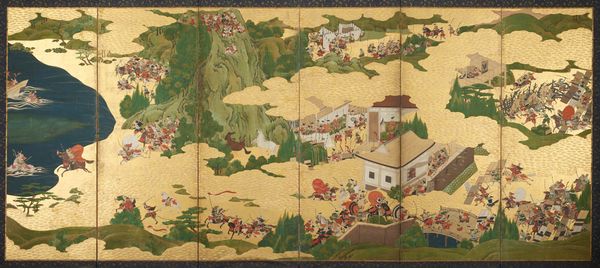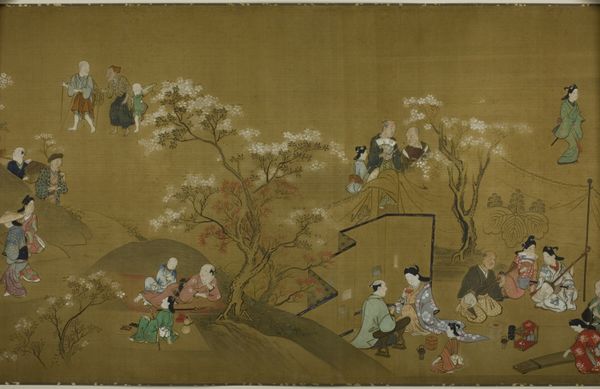
tempera, painting
#
narrative-art
#
tempera
#
painting
#
asian-art
#
japan
#
men
#
genre-painting
#
miniature
#
yamato-e
Dimensions: Image (each screen): 44 7/8 in. × 9 ft. 3 in. (114 × 282 cm)
Copyright: Public Domain
Kano Einō painted ‘One Hundred Boys’ on a six-panel screen during the Edo period in Japan. The theme of frolicking children has roots in Chinese art, often carrying wishes for numerous male offspring and, by extension, prosperity and continuity for a family. Einō was a prominent member of the Kano school, which served as official painters to the shogunate. This school dominated the Japanese art world for centuries, becoming an institution in itself. Kano school painters were celebrated for their ability to adapt classical styles to suit the tastes of the ruling elite. This image would likely have been displayed in the home of a wealthy family, reinforcing values around family and social stability. To truly understand ‘One Hundred Boys’, we can turn to social histories of the Edo period, studies of the Kano school, and analyses of domestic life. Only through this contextual understanding, we can grasp the work's full meaning as a reflection of its time.
Comments
No comments
Be the first to comment and join the conversation on the ultimate creative platform.

